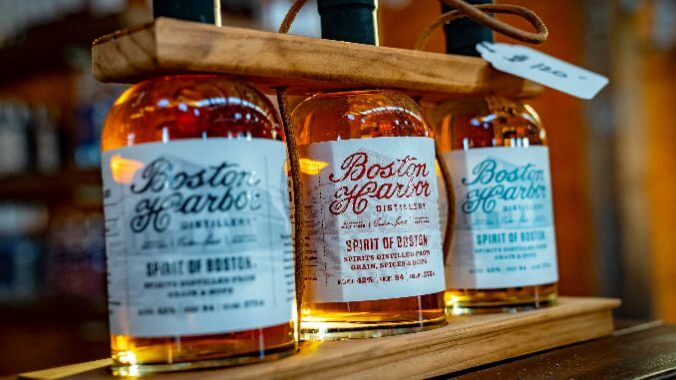Why Distilled Beer May Be Craft’s Future
Photo courtesy of Boston Harbor Distillery
Turning beer into whiskey isn’t new. But it is a growing—if highly complex—and exciting niche that many see as the future of craft spirits.
“I think of it as a whiskey for beer lovers and a beer for whiskey lovers,” says Rhonda Kallman, who co-founded the Boston Beer Company with James Koch in 1984 and decided to bring that craft know-how to the spirits industry. She has been creating whiskeys, some of which she chose to distill from beer, since launching the Boston Harbor Distillery in 2012 and has personally witnessed the explosive interest in and growth of the whiskey-from-beer market since.
“It is the future,” Kallman says. “Both beer and whiskey enthusiasts have been looking for the next thing for a while, and whiskey distilled from beer offers so much room for innovation. It’s the wild, wild west right now.”
In some ways, whiskey made from beer has existed as long as whiskey has existed. The process of turning grains into a fermented mash that is destined for distillation is analogous to the process of creating beer. It’s even called “distiller’s beer.” Generally though, you wouldn’t want to drink a pint of it. That mash is not intended to be a finished product—it would be like sitting down to a bowl of mirepoix. Sure, it’s edible, but wouldn’t you rather wait until it’s incorporated into a decadent Bolognese sauce?
Many distillers look at distilling whiskey from beer like a Michelin-starred chef might consider a pile of interesting ingredients. What to do with it? Let’s see.
“We have been working with Sierra Nevada for 26 years on various collaborations,” says Dave Smith, head distiller and blender at St. George Spirits in Alameda, California. “They’re good friends of ours, and sometimes they’d call us and just say, ‘we’ve got a whoopsie beer.’ Bad for them, great for us. We’d bring it down to our distillery and look at it as a grand experiment and an opportunity to work with essentially a mash bill that we’d never otherwise get to work with.”
Releasing a finished product was never really the point, until Sierra made way too much Ruthless Rye IPA. “We tasted it and realized we could create something that was too good to not share with the world,” says Smith.
Producers of whiskey distilled from beer also see the product as a link in the craft spirits chain. “Our projects sell out very quickly,” says John Kinney, who founded Sidewinder Spirits Company in 2016 as an offshoot of his Livermore, California, winery, Occasio. “They’re a bridge between craft beer and spirits, and they are also appealing to younger people, who are interested in local sourcing, reducing waste, innovation and new flavors. Whiskeys distilled from beer, by its nature, offer all of those things.”
-

-

-

-

-

-

-

-

-

-

-

-

-

-

-

-

-

-

-

-

-

-

-

-

-

-

-

-

-

-

-

-

-

-

-

-

-

-

-

-








































